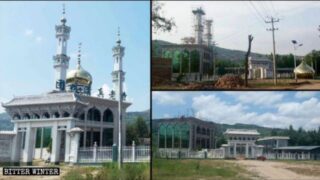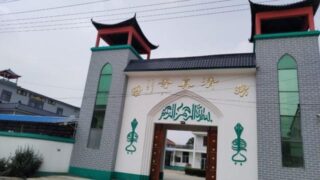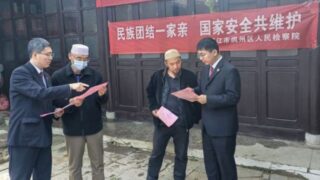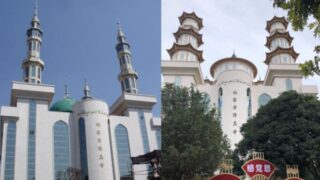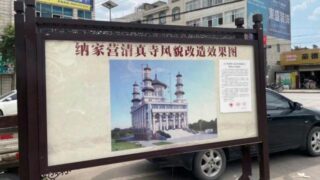The famous Doudian Mosque and the Songyu Mosque have lost their trademark Islamic features and now look like non-Muslim Chinese temples.
by Chen Tao
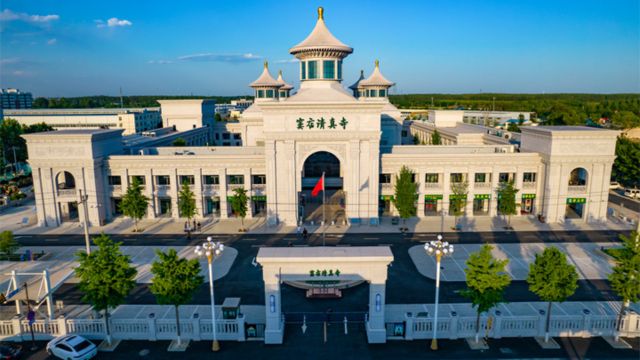

“Bitter Winter” reported last year that the largest Arab-style mosque in northern China, the Doudian Mosque in Beijing, would begin its “Sinicization” in August 2022, and the authorities at that time had planned to complete the “renovation” by May 1, 2023. “Bitter Winter” has recently learned that the “Sinicization” of the Doudian Mosque in Beijing was completed in April this year. It was reopened to visitors in mid-August, a few days ago.
The official website of Doudian Village and the pictures of the mosque site taken by a “Sing Tao Daily” reporter in Beijing show that the overall structure of the Doudian mosque’s original zigzag shape, the murals on the walls of the main hall depicting the Muslim holy city of Mecca, and the interior of the worship hall have not been altered, but all the originally designed Arabic-style arcades have been transformed into square arcades. Two moonlit towers rising up to the sky to the north and south of the worship hall have been razed to the ground. The Arab-style dome also disappeared and was replaced by five Chinese-style white round spires.
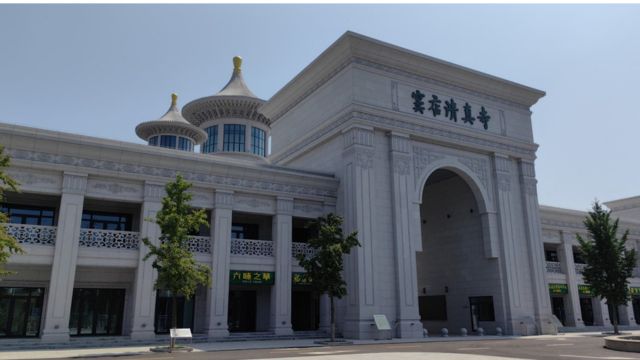

The “Sing Tao Daily” report also said that the new Chinese-style rounded spires of the Doudian Mosque look like the roof of the Temple of Prayer for the Year of the Lord in Beijing’s Temple of Heaven. If you look closely, you can see the mortise and tenon construction, as well as the auspicious cloud pattern and the Chinese knot pattern carved on each of the exterior walls. In addition, you can see the “socialist core values” propaganda, as well as the slogans “Study and implementation of the spirit of the twentieth CCP National Congress,” “Adhere to the direction of the Sinicization of China’s religions,” and others that have “invaded” the Doudian mosque everywhere.
However, in the exhibition hall open to the public, the promotional video is still showing the image of the Arab-style mosque before Sinicization. The narrator tells visitors that “the Doudian mosque is not only a classic Muslim religious architecture, but also a symbol of national unity and a display window for foreigners.”


A source in Beijing’s Doudian village confirmed the authenticity of the “Sing Tao Daily” report to “Bitter Winter,” but he believes that the purpose of the “Sing Tao Daily” piece “is not pure.” “The Doudian mosque was opened to tourists in mid-August this year, he said, and you need to register your ID card to enter, and there are cameras inside. So the real Muslims do not dare to take photos even if they go to worship, let alone post them online. That reporter from ‘Sing Tao Daily’ went in to take photos shortly after the mosque opened, probably with the tacit approval of the authorities. After all, the ‘Sing Tao Daily’ is a Hong Kong media outlet with a relatively pro-CCP stance, and the report he wrote as a whole seems to be biased in favor of affirming this wave of the Sinicization of Islam campaign initiated by the authorities.”
In addition, pictures posted by anti-Muslim, pro-CCP nationalist bloggers on Weibo show that the Songyu Mosque(松榆清真寺) in Beijing’s Panjiayuan(潘家园)has also been “Sinicized.” The mosque’s Arab-style minaret, dome, and star and moon symbols have been removed and replaced with Chinese-style features.
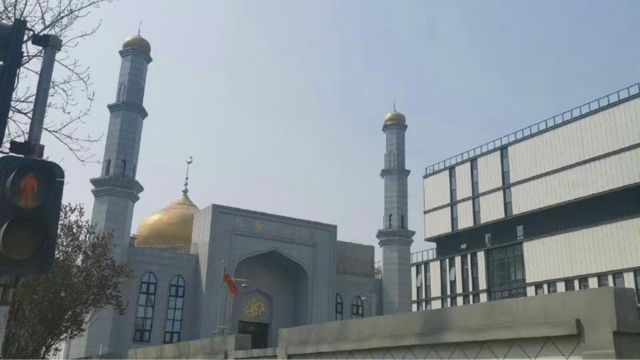

“Bitter Winter” could not independently verify the exact start and completion dates of the mosque’s “Sinicization,” but according to anti-Muslim, pro-Communist and nationalist bloggers on Weibo, the original Arabic-style architecture of the Songyu Mosque was still in place in 2022. The earliest date for the release of pictures of the renovated mosque was mid-June 2023, so it can be inferred that the Sinicization of the mosque took place between 2022 and June 2023.
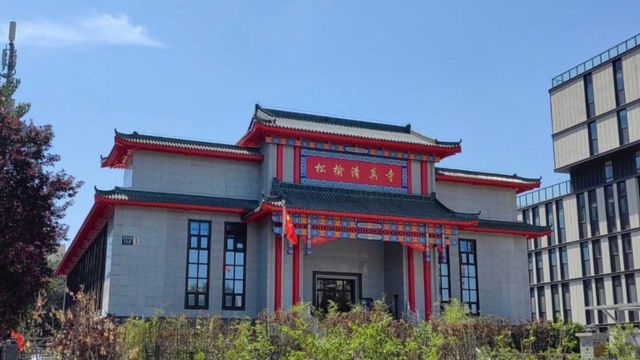

As the CCP’s campaign to “Sinicize” Islam receives more and more attention from the international media and condemnation from human rights organizations, the Party is doing its best to block the relevant news and suppress those who break the news in different parts of China. Interestingly, pro-CCP netizens and self-publishing outlets do not regard the “Sinicization” of mosques as a violation of religious freedom, but are rather happy to publicize it, giving the outside world a rare window into the dire situation of Muslims’ religious liberty in China.



